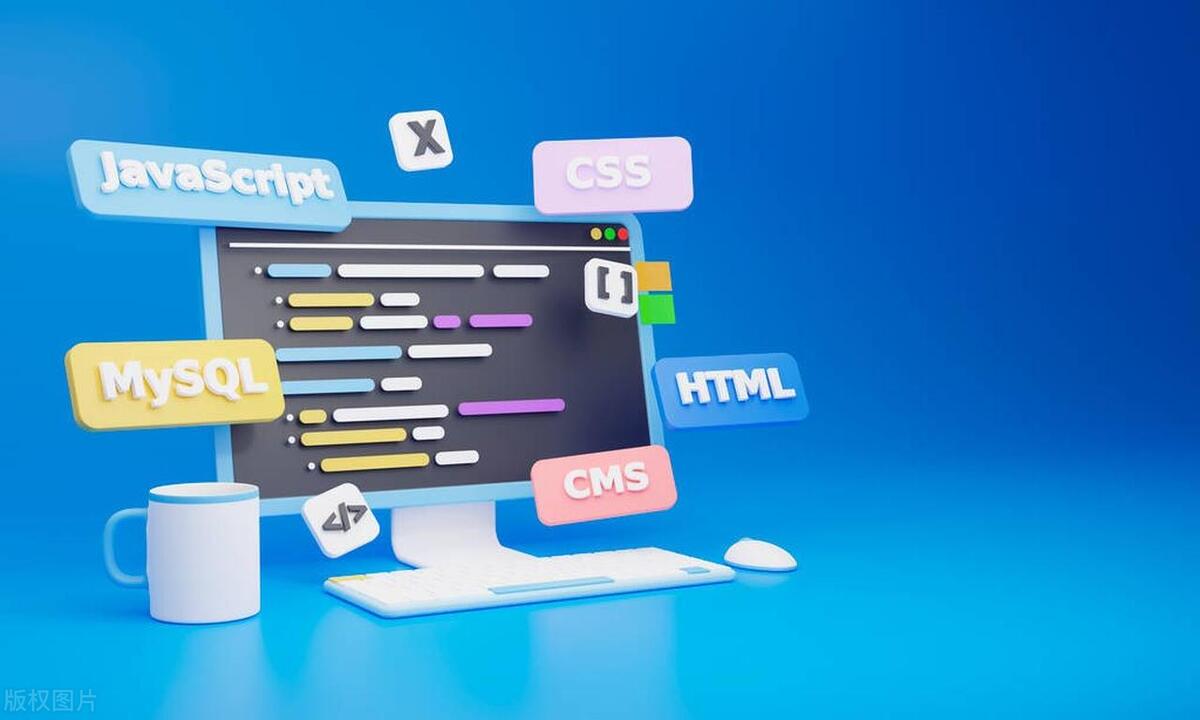 Web Front-end
Web Front-end
 Front-end Q&A
Front-end Q&A
 Modern JavaScript: Demystifying Async/Await, Promises, and Callbacks
Modern JavaScript: Demystifying Async/Await, Promises, and Callbacks
Modern JavaScript: Demystifying Async/Await, Promises, and Callbacks
Aug 02, 2025 am 05:06 AMJavaScript uses callbacks, promises, and async/await to handle asynchronous operations; 1. Callbacks are the oldest method but lead to "callback hell" and inversion of control issues; 2. Promises improve readability and error handling with .then() and .catch() chains; 3. Async/await, built on promises, provides a clean, synchronous-like syntax using await inside async functions and try/catch for errors; today, async/await is the recommended approach for new code due to its clarity and maintainability, while callbacks should be avoided except in legacy contexts.

JavaScript has long been single-threaded and non-blocking, which means it can’t afford to wait around for slow operations like fetching data from a server. To handle this, JavaScript evolved several patterns for dealing with asynchronous operations: callbacks, promises, and async/await. If you’ve ever been confused about when or why to use each, you’re not alone. Let’s break them down in a practical, modern context.

Callbacks: The Original Way (and the "Callback Hell")
Callbacks are functions passed as arguments to other functions, to be executed after a task completes.
function fetchData(callback) {
setTimeout(() => {
callback('Data fetched!');
}, 1000);
}
fetchData((result) => {
console.log(result); // "Data fetched!" after 1 second
});This works fine for simple cases, but problems arise when you have multiple async operations:

fetchData((data1) => {
processData(data1, (data2) => {
saveData(data2, (data3) => {
console.log('All done:', data3);
});
});
});This nesting is known as "callback hell" — hard to read, debug, and maintain.
? Key issue: Inversion of control. You’re handing your logic over to another function and trusting it to call your callback correctly — and only once.
Promises: A Better Way to Chain Async Logic
Promises solve many callback problems by representing a future value. A promise can be pending, fulfilled, or rejected.
function fetchData() {
return new Promise((resolve, reject) => {
setTimeout(() => {
resolve('Data fetched!');
}, 1000);
});
}
fetchData()
.then((result) => {
console.log(result);
})
.catch((error) => {
console.error('Something went wrong:', error);
});Now you can chain operations cleanly:
fetchData()
.then(processData)
.then(saveData)
.then(finalResult => console.log('Done:', finalResult))
.catch(err => console.error(err));? Benefits:
- Avoids deep nesting
- Centralized error handling with
.catch()- You control the flow instead of handing it off
But .then().then().catch() syntax can still feel clunky, especially with complex logic.
Async/Await: Writing Async Code That Looks Sync
async/await is built on top of promises and lets you write asynchronous code like it’s synchronous — without blocking the thread.
async function handleData() {
try {
const data1 = await fetchData();
const data2 = await processData(data1);
const data3 = await saveData(data2);
console.log('Done:', data3);
} catch (error) {
console.error('Error:', error);
}
}
handleData();Here’s what’s happening:
asyncfunctions always return a promiseawaitpauses execution until the promise resolves (but doesn’t block the thread!)- Use
try/catchfor error handling, just like sync code
? Pro tip: You can
awaitany promise — includingfetch(),setTimeout(with a wrapper), or your own custom async functions.
You can even run operations in parallel:
async function loadAll() {
const [result1, result2] = await Promise.all([
fetch('/api/user'),
fetch('/api/posts')
]);
return { result1, result2 };
}So, Which Should You Use Today?
- ? Callbacks: Avoid in new code unless working with legacy APIs. They’re error-prone and hard to scale.
- ? Promises: Great for simple chains or when you can’t use
async/await(e.g., top-level code in older environments). - ?? Async/Await: The modern standard. Use it in almost all new async code — it’s cleaner, easier to debug, and more readable.
?? Remember:
awaitonly works insideasyncfunctions. So you can’t use it directly in.map()or.forEach()unless the callback isasync.
Final Thoughts
The evolution from callbacks → promises → async/await reflects JavaScript’s growth into a robust language for complex applications. While you’ll still encounter callbacks in older code or Node.js APIs, modern JavaScript favors async/await for clarity and maintainability.
Understanding how they all work together — that async/await is just syntactic sugar over promises, and promises replaced the pitfalls of callbacks — gives you the power to read, debug, and write better async code.
Basically, just use async/await unless you have a reason not to. And now you know why it works.
The above is the detailed content of Modern JavaScript: Demystifying Async/Await, Promises, and Callbacks. For more information, please follow other related articles on the PHP Chinese website!

Hot AI Tools

Undress AI Tool
Undress images for free

Undresser.AI Undress
AI-powered app for creating realistic nude photos

AI Clothes Remover
Online AI tool for removing clothes from photos.

Clothoff.io
AI clothes remover

Video Face Swap
Swap faces in any video effortlessly with our completely free AI face swap tool!

Hot Article

Hot Tools

Notepad++7.3.1
Easy-to-use and free code editor

SublimeText3 Chinese version
Chinese version, very easy to use

Zend Studio 13.0.1
Powerful PHP integrated development environment

Dreamweaver CS6
Visual web development tools

SublimeText3 Mac version
God-level code editing software (SublimeText3)
 How does React handle focus management and accessibility?
Jul 08, 2025 am 02:34 AM
How does React handle focus management and accessibility?
Jul 08, 2025 am 02:34 AM
React itself does not directly manage focus or accessibility, but provides tools to effectively deal with these issues. 1. Use Refs to programmatically manage focus, such as setting element focus through useRef; 2. Use ARIA attributes to improve accessibility, such as defining the structure and state of tab components; 3. Pay attention to keyboard navigation to ensure that the focus logic in components such as modal boxes is clear; 4. Try to use native HTML elements to reduce the workload and error risk of custom implementation; 5. React assists accessibility by controlling the DOM and adding ARIA attributes, but the correct use still depends on developers.
 Describe the difference between shallow and full rendering in React testing.
Jul 06, 2025 am 02:32 AM
Describe the difference between shallow and full rendering in React testing.
Jul 06, 2025 am 02:32 AM
Shallowrenderingtestsacomponentinisolation,withoutchildren,whilefullrenderingincludesallchildcomponents.Shallowrenderingisgoodfortestingacomponent’sownlogicandmarkup,offeringfasterexecutionandisolationfromchildbehavior,butlacksfulllifecycleandDOMinte
 What is the significance of the StrictMode component in React?
Jul 06, 2025 am 02:33 AM
What is the significance of the StrictMode component in React?
Jul 06, 2025 am 02:33 AM
StrictMode does not render any visual content in React, but it is very useful during development. Its main function is to help developers identify potential problems, especially those that may cause bugs or unexpected behavior in complex applications. Specifically, it flags unsafe lifecycle methods, recognizes side effects in render functions, and warns about the use of old string refAPI. In addition, it can expose these side effects by intentionally repeating calls to certain functions, thereby prompting developers to move related operations to appropriate locations, such as the useEffect hook. At the same time, it encourages the use of newer ref methods such as useRef or callback ref instead of string ref. To use Stri effectively
 Vue with TypeScript Integration Guide
Jul 05, 2025 am 02:29 AM
Vue with TypeScript Integration Guide
Jul 05, 2025 am 02:29 AM
Create TypeScript-enabled projects using VueCLI or Vite, which can be quickly initialized through interactive selection features or using templates. Use tags in components to implement type inference with defineComponent, and it is recommended to explicitly declare props and emits types, and use interface or type to define complex structures. It is recommended to explicitly label types when using ref and reactive in setup functions to improve code maintainability and collaboration efficiency.
 How to handle forms in Vue
Jul 04, 2025 am 03:10 AM
How to handle forms in Vue
Jul 04, 2025 am 03:10 AM
There are three key points to be mastered when processing Vue forms: 1. Use v-model to achieve two-way binding and synchronize form data; 2. Implement verification logic to ensure input compliance; 3. Control the submission behavior and process requests and status feedback. In Vue, form elements such as input boxes, check boxes, etc. can be bound to data attributes through v-model, such as automatically synchronizing user input; for multiple selection scenarios of check boxes, the binding field should be initialized into an array to correctly store multiple selected values. Form verification can be implemented through custom functions or third-party libraries. Common practices include checking whether the field is empty, using a regular verification format, and displaying prompt information when errors are wrong; for example, writing a validateForm method to return the error message object of each field. You should use it when submitting
 Server-Side Rendering with Next.js Explained
Jul 23, 2025 am 01:39 AM
Server-Side Rendering with Next.js Explained
Jul 23, 2025 am 01:39 AM
Server-siderendering(SSR)inNext.jsgeneratesHTMLontheserverforeachrequest,improvingperformanceandSEO.1.SSRisidealfordynamiccontentthatchangesfrequently,suchasuserdashboards.2.ItusesgetServerSidePropstofetchdataperrequestandpassittothecomponent.3.UseSS
 A Deep Dive into WebAssembly (WASM) for Front-End Developers
Jul 27, 2025 am 12:32 AM
A Deep Dive into WebAssembly (WASM) for Front-End Developers
Jul 27, 2025 am 12:32 AM
WebAssembly(WASM)isagame-changerforfront-enddevelopersseekinghigh-performancewebapplications.1.WASMisabinaryinstructionformatthatrunsatnear-nativespeed,enablinglanguageslikeRust,C ,andGotoexecuteinthebrowser.2.ItcomplementsJavaScriptratherthanreplac
 What is content security policy CSP
Jul 04, 2025 am 03:21 AM
What is content security policy CSP
Jul 04, 2025 am 03:21 AM
Content Security Policy (CSP) prevents attacks such as XSS by limiting the loading source of web page resources. Its core mechanism is to set a whitelist to prevent unauthorized scripts from being executed. The steps to enable include: 1. Define the policy and clarify the allowed resource sources; 2. Add Content-Security-PolicyHTTP header to the server; 3. Use Report-Only mode to test and debug in the initial stage; 4. Continuous monitoring and optimization strategies to ensure that they do not affect normal functions. Notes include handling inline scripts, careful use of third-party resources, compatibility support, and other irreplaceable security measures.






